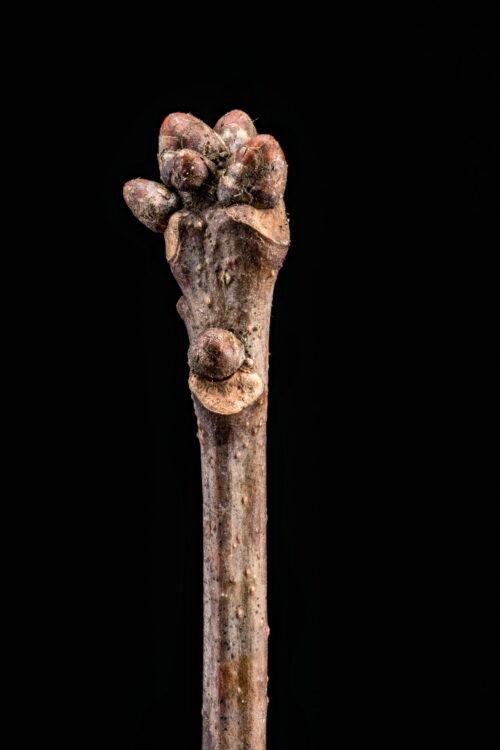white oak (Quercus alba)
Fagaceae, the beech family
How to recognize white oak. Our oaks have (except for one species with entire leaves) simple, lobed leaves that are alternately arranged. The upper internodes are very short though, making the leaves appear clustered towards the branch tips. There are two broad categories of oaks: (1) the white oak group which has blunt lobes that do not end in bristle tips, and (2) the red oak group which has bristle-tipped lobes.

White oak on a city street. The fluffy ball is a gall housing a wasp called the with wool sower, Callirhytis seminator.
Oak trees, especially those in the white oak group, have a wide sillhouette.

White oak tree in a meadow.
The light gray fissured and scaly bark is also diagnostic.

White oak has light gray bark.
In the winter. Oaks have clustered end buds. Members of the white oak group are blunt, not sharp-pointed (similar to their leaves).

Oaks have clustered end buds.
Where to find white oak. E. Lucy Braun, in The Woody Plants of Ohio (1961, 1989; The Ohio State University Press) tell us that this species is “A large and valuable forest tree of the eastern half of the United States and southern Canada, occirring almost throughout the deciduous forest. Probably present in all counties of Ohio. Found in a variey of habitats: mesic woods, wet flats, dry hillsides. Formerly an abundant tree of the Illinoian Till Plain (“flats”) of southwestern Ohio, where trees 3-4.5 (o5 5) ft. D.B.H. were frequent.”
